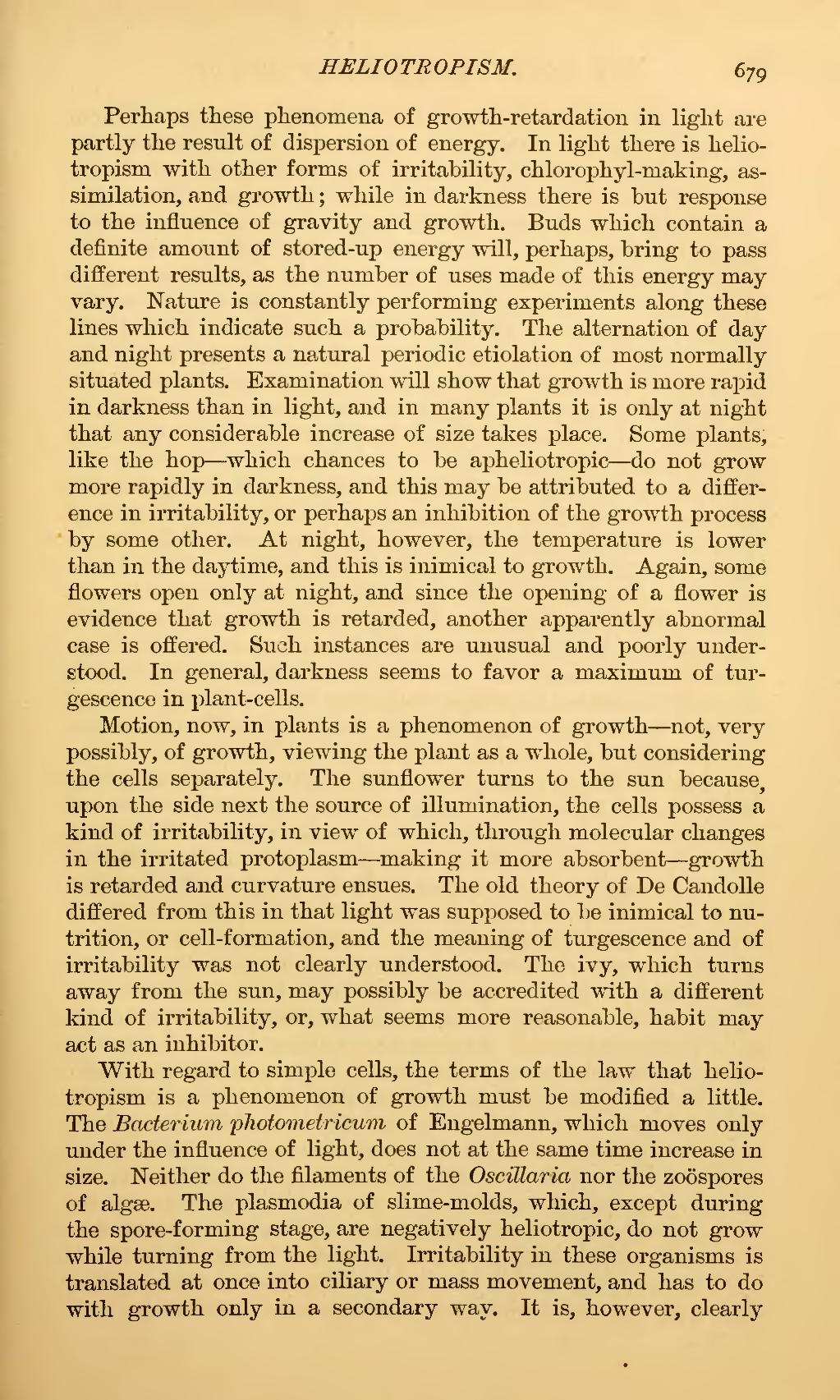Perhaps these phenomena of growth-retardation in light are partly the result of dispersion of energy. In light there is heliotropism with other forms of irritability, chlorophyl-making, assimilation, and growth; while in darkness there is hut response to the influence of gravity and growth. Buds which contain a definite amount of stored-up energy will, perhaps, bring to pass different results, as the number of uses made of this energy may vary. Nature is constantly performing experiments along these lines which indicate such a probability. The alternation of day and night presents a natural periodic etiolation of most normally situated plants. Examination will show that growth is more rapid in darkness than in light, and in many plants it is only at night that any considerable increase of size takes place. Some plants, like the hop—which chances to be apheliotropic—do not grow more rapidly in darkness, and this may be attributed to a difference in irritability, or perhaps an inhibition of the growth process ' by some other. At night, however, the temperature is lower than in the daytime, and this is inimical to growth. Again, some flowers open only at night, and since the opening of a flower is evidence that growth is retarded, another apparently abnormal case is offered. Such instances are unusual and poorly understood. In general, darkness seems to favor a maximum of turgescence in plant-cells.
Motion, now, in plants is a phenomenon of growth—not, very possibly, of growth, viewing the plant as a whole, but considering the cells separately. The sunflower turns to the sun because upon the side next the source of illumination, the cells possess a kind of irritability, in view of which, through molecular changes in the irritated protoplasm—making it more absorbent—growth is retarded and curvature ensues. The old theory of De Candolle differed from this in that light was supposed to be inimical to nutrition, or cell-formation, and the meaning of turgescence and of irritability was not clearly understood. The ivy, which turns away from the sun, may possibly be accredited with a different kind of irritability, or, what seems more reasonable, habit may act as an inhibitor.
With regard to simple cells, the terms of the law that heliotropism is a phenomenon of growth must be modified a little. The Bacterium photometricum of Engelmann, which moves only under the influence of light, does not at the same time increase in size. Neither do the filaments of the Oscillaria nor the zoöspores of algæ. The plasmodia of slime-molds, which, except during the spore-forming stage, are negatively heliotropic, do not grow while turning from the light. Irritability in these organisms is translated at once into ciliary or mass movement, and has to do with growth only in a secondary way. It is, however, clearly
